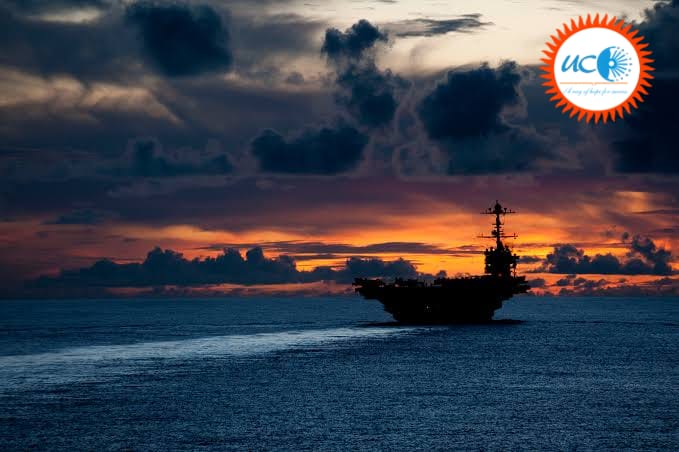What are the maritime security challenges in India? Discuss the organizational, technical and procedural initiatives taken to improve maritime security.
India has always felt confined by its neighbours, whether they are involved in maritime or territorial disputes. In the post-Cold War era, neither India nor China, another key hegemon in the Indian Ocean region, have been able to realign or align their orientations with the United States. In the IOR, India is dealing with a number of significant problems, such as piracy, terrorism, human trafficking, illegal immigration, border disputes, etc. significant obstacles to maritime security
- Control of Choke Points: India, which is equally remote from most of these choke points, may contribute significantly to the security of this vast maritime zone. These are necessary for the defence of Indian maritime interests. The Iran-Iraq War in the 1980s, for instance, highlighted the dangers to Indian energy imports through the Straits of Hormuz.
- Both old and novel threats can affect SLOCs, and SLOCs in the IOR have historically been susceptible to disruption.
- Regional Uncertainty: The IOR’s maritime security is made more challenging by unpredictability in Somalia, Yemen, Iran, and other nations.
The international community is concerned about Somalia-based piracy as a whole.
- Trafficking: Regrettably, the world’s most notorious centres of drug production are located in the Indian Ocean region. Examples include the Golden Triangle and Golden Crescent. The IOR is also infamous for other destabilizing activities like gunrunning and human trafficking.
- Maritime Terrorism: Therefore, it is quite possible for rival interests to take advantage of this extensive maritime activity to launch attacks on land, as was seen in the Mumbai terror attacks of 26/11.
- Extra Regional Military Presence: For India’s maritime security, the growing Chinese Navy and its acquisition of a base in Djibouti, 24 access facilities in Malaysia, the “covert” base in Gwadar, and the recently announced maritime silk route are very concerning.
- Illegal Unreported and Unregulated (IUU) Fishing: IUU presents a threat to maritime security because it gives piracy a base of operations.
India’s maritime security initiative
- Security and Growth for All in the Region (SAGAR), to improve relations with its maritime neighbours on the economic and security fronts.
- Project Mausam, to re-establish connections and communication channels between nations surrounding the Indian Ocean
- Indian Ocean Naval Symposium (IONS), to foster closer maritime ties between the navies of the Indian Ocean region’s coastal states.
- Indian Ocean Rim Association (IORA)– India can address maritime concerns thanks to close collaboration with IORA nations.
- Sagarmala Initiative– With the Sagarmala project, India’s coastline will be surrounded by several ports.
Way Forward
- Regional Maritime Security Framework: To address the issues, an all-encompassing security framework for the IOR must be created.
- Developing close ties with nations facing a crisis: For the unhindered and unrestricted movement of Indian trade and shipping to support ongoing economic development. Think of Saudi Arabia, Egypt, etc.
- Increase maritime exchanges between littoral states. For instance, military drills, cultural encounters, etc.
- Information Exchange: To intercept and prosecute vessels and individuals involved in illegal activity, mechanisms and protocols for the exchange of tactically crucial information and intelligence must be put in place.
- Common Operational Grid: A common operational grid between the littoral nations is necessary for the effective management of the maritime domain, particularly within a complicated region like the IOR.
- India must make improvements to its coordinated patrols with all of the littoral states. It would be necessary for ASEAN to work through SAARC, BIMSTEC, and ASEAN to fill in the gaps and establish a framework for shared maritime security.
A multidisciplinary maritime advisory body is urgently required for a country with India’s maritime resources, difficulties, and opportunities to conceptualize a vision, create plans, and keep an eye on maritime activity.
The main areas where India and other like-minded nations must coordinate their efforts are the maritime security challenges in the Indo-Pacific and South China Sea.
The South China Sea is still an important topic in the larger discussion. However, many nations, including India, are still reluctant to take direct action against China.








